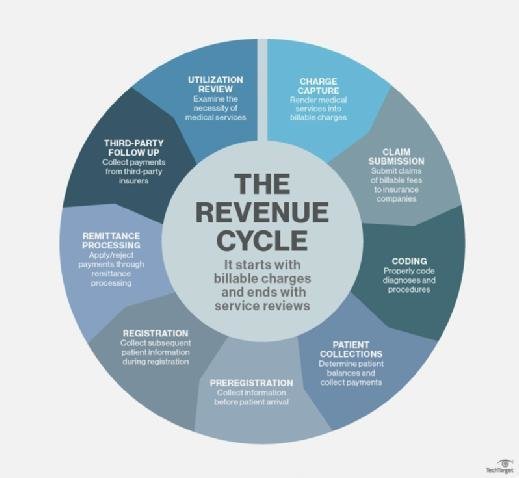views
Discover top strategies to streamline Revenue Cycle Management in healthcare, including improvements in medical billing, coding, audit accuracy, and credentialing services for better financial outcomes.
In an era where precision and efficiency are crucial, healthcare providers can no longer afford the inefficiencies of outdated systems.
Revenue Cycle Management (RCM) has become a pillar of operational success for clinics, hospitals, and private practices, enabling them to track every step of the patient journey—from scheduling to final payment—with clarity and control.F
Why Revenue Cycle Management Matters

Without effective RCM, even the best clinical care can result in poor financial health. RCM ensures:
1. Accurate revenue capture for services delivered
2. Reduced billing delays and denials
3. Improved compliance with regulations
4. Enhanced patient satisfaction through transparent processes
Optimizing RCM isn’t just about making money—it's about creating a sustainable, patient-focused healthcare ecosystem.
Best Practices for Revenue Cycle Optimization
1. Automate Medical Billing Workflows
Automation tools streamline medical billing by:
- Reducing manual entry errors
- Flagging incomplete claims
- Accelerating the approval and reimbursement cycle
2. Leverage AI for Medical Coding
Accurate medical coding ensures providers are reimbursed properly and quickly. Best practices include:
- Using AI-assisted coding platforms for consistent documentation
- Providing coder training to keep up with ICD-10/CPT updates
- Auditing code patterns regularly for anomalies
🔍 Bonus Tip: Natural language processing (NLP) tools can extract keywords and map them to correct codes directly from physician notes.
3. Conduct Regular Medical Audits
Medical audit processes reveal inefficiencies and compliance gaps. To maximize their impact:
- Implement internal audits at least quarterly
- Use analytics to detect high-risk billing areas
- Document audit outcomes and corrective actions thoroughly
4. Digitize Credentialing Services
Outdated credentialing services can delay provider onboarding and create bottlenecks in patient flow. Best practices:
- Utilize cloud-based systems for real-time tracking
- Maintain a centralized repository of provider documents
- Set calendar alerts for renewal deadlines
Digitizing credentialing speeds up payer enrollment and reduces compliance risk.
5. Integrate Systems Across the Revenue Cycle
One of the most effective optimizations is linking your EHR, billing, and reporting systems. Integration enables:
- Seamless data sharing between departments
- Fewer duplicate entries
- Real-time financial visibility
This holistic approach breaks down silos and improves decision-making at every RCM phase.
🚀 Metrics That Matter
Measuring success is essential. Monitor these KPIs for healthy RCM:
Regularly reviewing these metrics ensures continuous improvement.
🏥 Before You Go:
Whether you’re upgrading your medical billing, refining medical coding, streamlining medical audit, or enhancing credentialing services, the goal remains the same: make Revenue Cycle Management smarter, faster, and more accurate.
That’s why Clinic IT Solutions integrates intelligent, end-to-end RCM solutions—designed to help healthcare providers reduce administrative overhead, boost cash flow, and stay compliant in a complex regulatory world.

FAQs
1. What is Revenue Cycle Management in healthcare?
Revenue Cycle Management is the administrative and clinical process of tracking patient service revenue—from appointment booking through final payment and follow-up.
2. How can automation help with medical billing?
Automation reduces billing errors, accelerates claim processing, and minimizes rejected or denied claims.
3. Why is accurate medical coding important?
Correct coding ensures proper reimbursement, reduces the risk of audits, and improves the financial health of practices.
4. What are the benefits of routine medical audits?
Audits enhance transparency, detect fraud or miscoding, and prepare practices for payer reviews.
5. How does digitizing credentialing services benefit clinics?
It speeds up provider onboarding, ensures compliance with payer requirements, and helps avoid costly enrollment delays.



Comments
0 comment